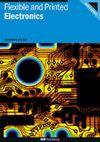钨酸钡纳米棒分散聚偏氟乙烯纳米织物具有压电电容传感能力的柔性压电和摩擦电能量采集器的研制
IF 3.2
4区 工程技术
Q3 MATERIALS SCIENCE, MULTIDISCIPLINARY
引用次数: 0
摘要
无铅柔性压电纳米发电机(PNG)和摩擦电纳米发电机(TENG)因其利用浪费的机械能发电的能力而受到追捧。对添加剂和加工技术的全面了解对于微调此类能源系统的性能至关重要。研究了添加反相微乳液合成的钨酸钡纳米棒(BWN)对聚偏氟乙烯(PVDF)静电纺丝纳米织物形貌、结晶度和多态性的影响。BWN的加入提高了纳米织物的电活性相含量,当BWN含量为3wt %时,纳米织物的电活性相含量最高,为86.5%。含有5 wt% BWN的纳米织物的介电常数比原始静电纺PVDF纳米织物(EPVDF)高约1.96倍。由同一体系制备的传感器的电容与初始电容的相对变化率比EPVDF大4倍。从而提高了其压电和摩擦电性能。使用含有3 wt% BWN的纳米织物制成的PNG在施加8 n的负载下产生最高的开路电压8 V,使用相同系统制成的TENG能够产生200 V的输出电压,这是在触点分离模式下单指轻敲EPVDF的1.77倍。同样的复合纳米织物产生的压电和摩擦电功率密度分别为4.3µW cm−2和646µW cm−2。TENG可以在一个手指轻敲下点亮40个led。使用上述纳米织物制造的颤振驱动TENG能够在7 m s - 1的风速下产生84 V的摩擦电压。总的来说,这些纳米织物可能是为可穿戴设备、环境传感器和物联网供电的能量收集设备的潜在材料。本文章由计算机程序翻译,如有差异,请以英文原文为准。
Development of a flexible piezoelectric and triboelectric energy harvester with piezo capacitive sensing ability from barium tungstate nanorod-dispersed PVDF nanofabrics
Lead-free flexible piezoelectric nanogenerator (PNG) and triboelectric nanogenerator (TENG) are sought after due to their ability to produce electricity by harnessing wasteful mechanical energy. A comprehensive understanding of additives and processing techniques is crucial for fine-tuning the performance of such energy systems. We have investigated in detail the effect of the addition of reverse microemulsion synthesized barium tungstate nanorods (BWN) on morphology, crystallinity, polymorphism of electrospun nanofabrics of poly(vinylidene fluoride) (PVDF). The electroactive phase content of the nanofabrics was enhanced upon the addition of BWN and the highest electroactive phase content of 86.5% was observed in the nanofabric containing 3 wt% of BWN. The dielectric constant of the nanofabric containing 5 wt% BWN was ∼1.96 times higher than that of pristine electrospun PVDF nanofabric (EPVDF). The ratio of relative change in the capacitance to initial capacitance of the sensor fabricated from the same system was ∼4 times greater than that of EPVDF. Consequently, its piezoelectric and triboelectric performances were improved. The PNG fabricated using the nanofabric containing 3 wt% BWN produced the highest open-circuit voltage of 8 V under an applied load of 8 N. A TENG made using the same system was able to produce a voltage output of 200 V, which was 1.77 times as high as that of EPVDF under one-finger tapping in contact-separation mode. The same composite nanofabric produced piezoelectric and triboelectric power densities of 4.3 µW cm−2 and 646 µW cm−2, respectively. The TENG was able to light 40 LEDs under one finger tapping. Fluttering-driven TENG fabricated using the aforementioned nanofabric was able to produce a triboelectric voltage of 84 V at a wind speed of 7 m s−1. Overall, these nanofabrics could be a potential material for energy harvesting devices for powering wearable devices, environmental sensors, and internet of things.
求助全文
通过发布文献求助,成功后即可免费获取论文全文。
去求助
来源期刊

Flexible and Printed Electronics
MATERIALS SCIENCE, MULTIDISCIPLINARY-
CiteScore
4.80
自引率
9.70%
发文量
101
期刊介绍:
Flexible and Printed Electronics is a multidisciplinary journal publishing cutting edge research articles on electronics that can be either flexible, plastic, stretchable, conformable or printed. Research related to electronic materials, manufacturing techniques, components or systems which meets any one (or more) of the above criteria is suitable for publication in the journal. Subjects included in the journal range from flexible materials and printing techniques, design or modelling of electrical systems and components, advanced fabrication methods and bioelectronics, to the properties of devices and end user applications.
 求助内容:
求助内容: 应助结果提醒方式:
应助结果提醒方式:


